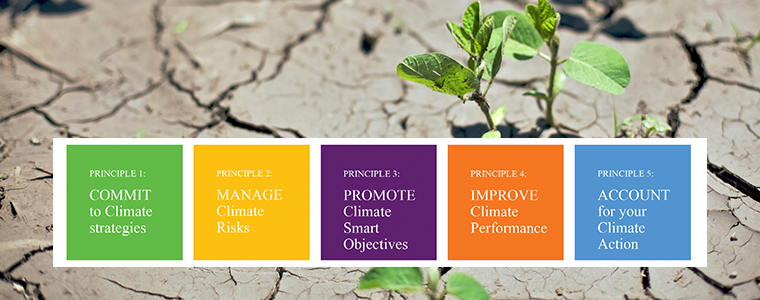
Clean energy, lower emissions, green jobs, adaptation and resiliency can be an opportunity for sustainable growth in developing and emerging countries where climate change is a threat to sustainable economic development.
To create these opportunities and mitigate climate risks, decision-makers need to integrate their climate change plans with national development agendas into nationally determined contributions (NDC) to reduce carbon emissions. But as they set out to reflect these commitments in planning and budget processes, national and sub-national governments face the challenge of how to best direct investments and set their economies and societies on low-carbon, climate-resilient development pathways.
With 70% of the forecasted increase in emissions from developing countries set to come from infrastructure that has yet to be built, decisions made today will determine whether the Paris Agreement and Sustainable Development Goals remain viable. In Latin America and the Caribbean, decisions surrounding infrastructure investments are especially significant. The demand for infrastructure is rising fast as citizens demand improved sanitation, energy and transport systems. At the IDB, we estimate that up to 5% of the region’s GDP, or roughly $250 billion per year, will be required to meet this demand.
Since dealing with climate change is both a matter of finding additional resources and a new way of decision-making, financial institutions have a key role in addressing those risks, as well as financing the shifts in market demand and supply to leverage opportunities of sustainable growth and increased resiliency.
Financial Institutions can play a pivotal part in directing and scaling up financing toward investments and assets that are necessary for transitioning to low-carbon, resilient economies by demonstrating the opportunities, and potential returns of investments to the market.
In the case of Latin America and the Caribbean, recent catastrophic floods in Peru, Colombia and Argentina underscore the urgent need for more sustainable infrastructure. At the IDB we are currently piloting a new methodology to evaluate and integrate planned operations for climate risk, into infrastructure investment decision-making.
To support countries’ efforts to implement their commitments under the Paris Agreement, the IDB has launched NDC Invest, a one-stop-shop aligning IDB Group resources to help countries transform their climate commitments into investment plans.
Based on practices implemented by financial institutions worldwide, 26 public and private financial institutions have worked together to build a consensus around five voluntary principles to effectively incorporate climate change considerations into their strategies and operations. This process is often referred to as “mainstreaming climate change.”
The idea of “mainstreaming” implies a shift from financing climate activities in incremental ways, to making climate change – both in term of opportunities and risks – a core consideration and a “lens” through which institutions deploy capital.
Launched in Paris during the COP21, these Five Voluntary Principles aims to support and guide financial institutions moving forward in the process of mainstreaming climate change for better adaptation and promotion of climate smart development through the following actions:
- Commit to climate strategies
- Manage climate risks
- Promote climate-smart objectives
- Improve climate performance
- Account for your climate action
Since COP 21 in Paris, the coalition has gained momentum and has recently launched the “Climate action in Financial Institutions – Principles for mainstreaming climate action” initiative. The initiatives will focus first on four priority areas:
- Climate risks: approaches, tools and methodologies
- Mapping reporting initiatives and understanding implementations challenges
- City-level climate smart approaches and financial instruments
- Spreading a climate strategy into a whole organization
The objectives of the initiative are to provide public and private financial institutions an opportunity to learn from each other, to disseminate good practices and lessons learned, and to collaborate on areas of common interest to support the development of new approaches. The IDB is committed to actively participate in this initiative and thereby contribute to reaching its goal.


The IADB Group could help mainstream climate finance by helping countries overcome the “good project-bad country” dynamic, by taking steps to raise countries’ ratings, thereby opening up more sources of financing. And for those countries with investment grade ratings for their sovereign debt, the IADB Group could strengthen municipalities ability to raise debt.
Very little of IADB financed infrastructure is in fact “citizens [who] demand improved sanitation, energy and transport systems” most of the infrastructure investment is similar to the general IIRSA plans which is not at all about “citizens” but about businesses — particularly those producing primary products for export to asia (i.e. most of the ‘ejes’). Citizens rarely get IABD funding unless a gas pipeline or a lot of sybean trucks just happen to come through their town. Please! Let us (as South American economists) not be disigenuous or nobody will believe us that matters.